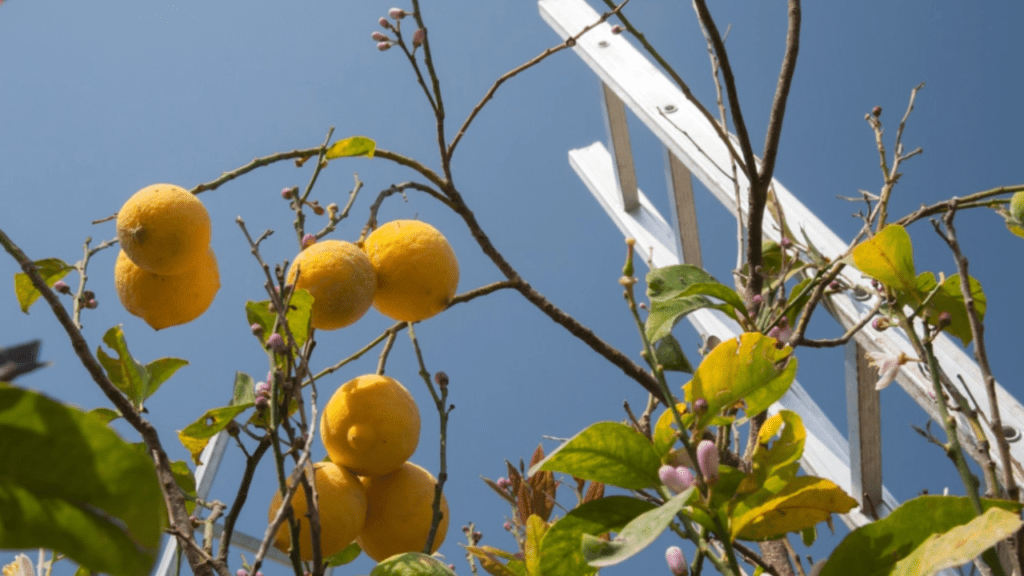
Lemon Tree Losing Leaves? Common Causes and Effective Solutions
If you’ve noticed your lemon tree losing leaves, you’re not alone. This common issue can be caused by a variety of factors, from pests to environmental stress. In this post, we’ll explore the most common causes of lemon tree leaf loss and provide effective solutions to help your tree thrive once again. Whether it’s due to pests, disease, or environmental factors, we’ve got you covered with expert advice to keep your lemon tree healthy and vibrant.
Table of Contents
ToggleCommon Causes of Lemon Tree Losing Leaves
Environmental Stress
Environmental stress can be a common cause of lemon tree leaf loss. This can include factors such as temperature fluctuations, inadequate sunlight, or changes in humidity levels. If your lemon tree is experiencing environmental stress, it’s important to take steps to create a more suitable environment for the tree to thrive. This may involve adjusting the location of the tree to ensure it receives adequate sunlight and protection from harsh weather conditions. Additionally, watering the tree consistently and ensuring proper drainage can also help alleviate environmental stress and prevent further leaf loss.
Effective Solutions
To address environmental stress and prevent further leaf loss, it’s important to create a suitable environment for your lemon tree. This may involve relocating the tree to a sunnier area, providing consistent and adequate watering, and protecting the tree from extreme temperature fluctuations. Additionally, using a well-draining potting mix and fertilizing the tree with a balanced fertilizer can help support the tree’s overall health and resilience to environmental stress. By addressing these factors, you can help your lemon tree regain its leaves and thrive once again.
Watering Issues
Watering consistently and ensuring proper drainage are crucial for the health of your lemon tree. If the tree is experiencing environmental stress, it’s important to adjust its location to ensure it receives adequate sunlight and protection from harsh weather conditions. Additionally, using a well-draining potting mix and fertilizing the tree with a balanced fertilizer can support its overall health and resilience. By addressing these factors, you can help your lemon tree regain its leaves and thrive once again.
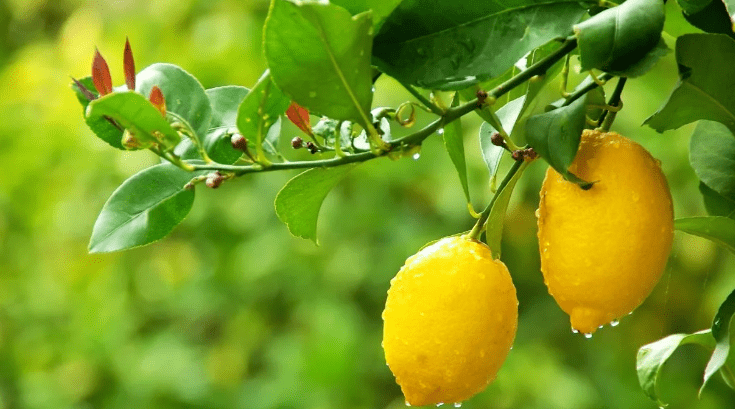
Nutrient Deficiencies
Can have a negative impact on the health and growth of your lemon tree. To address this issue, you can provide the tree with specific nutrients that may be lacking in the soil. This can be done through the use of fertilizers that are specifically formulated for citrus trees, as well as by amending the soil with organic matter to improve nutrient retention. Additionally, regular soil testing can help identify any deficiencies and allow for targeted supplementation. By addressing nutrient deficiencies, you can promote the overall health and vitality of your lemon tree, ultimately leading to improved leaf growth and fruit production. It’s important to monitor the condition of your lemon tree and take proactive measures to address any nutrient deficiencies that may arise. With proper care and attention, your lemon tree can thrive and produce an abundance of healthy, vibrant leaves.
Pests and Diseases
Common pests affecting lemon trees
Aphids
Are a common pest that can negatively impact the health of your lemon tree. They feed on the sap of the tree, causing yellowing and curling of the leaves, as well as stunted growth. To address an aphid infestation, you can use natural predators like ladybugs or lacewings, or use insecticidal soaps or oils to control their population. It’s important to regularly inspect your lemon tree for signs of aphids and take prompt action to prevent their damage.
In summary, nutrient deficiencies and pests like aphids can have a negative impact on the health and growth of your lemon tree. By addressing these issues through targeted supplementation and pest control methods, you can promote the overall health and vitality of your lemon tree, leading to improved leaf growth and fruit production. Taking proactive measures to monitor and care for your lemon tree will help it thrive and produce an abundance of healthy, vibrant leaves.
Spider mites
Are another common pest that can affect lemon trees. These tiny pests feed on the sap of the leaves, causing them to turn yellow and become stippled with tiny yellow dots. If left untreated, spider mites can cause significant damage to the overall health of the tree. To combat spider mites, you can use water to spray the leaves and dislodge the pests, or use insecticidal soaps to control their population. Regularly inspecting your lemon tree losing leaves for signs of spider mites and taking prompt action to address any infestations is crucial for maintaining the health of your tree. By being proactive in addressing common pests like aphids and spider mites, you can ensure the overall health and vitality of your lemon tree, leading to improved leaf growth and fruit production. It’s important to stay vigilant and take proactive measures to monitor and care for your lemon tree in order to prevent and address pest infestations.
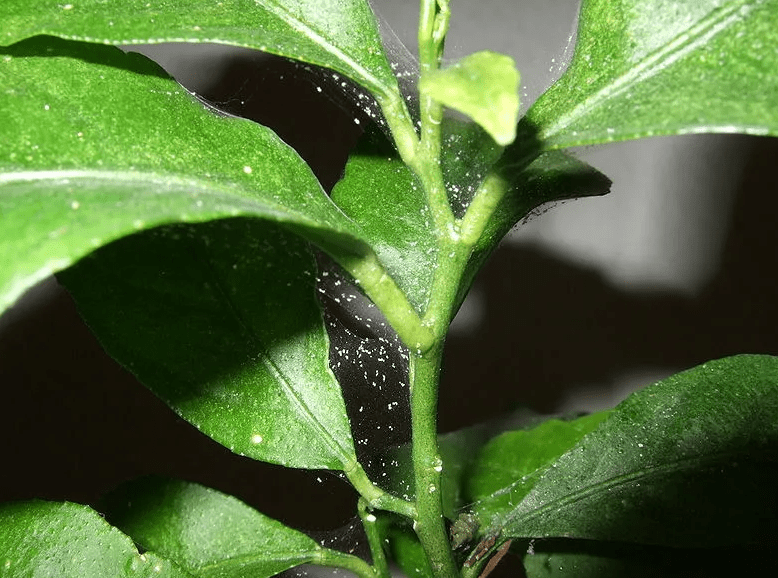
Scale insects
Are another common pest that can affect lemon trees. These pests can be identified by their hard, waxy covering that resembles scales, which can be found on the leaves and branches of the tree. These insects feed on the sap of the tree, draining its resources and causing yellowing and wilting of the leaves. To control scale insects, you can use horticultural oils or insecticidal soaps to suffocate and kill the pests. Pruning affected branches and using a soft brush to physically remove the insects can also help control their population. Regularly inspecting your lemon tree for signs of scale insects and taking prompt action to address any infestations is essential for the health of your tree. By being proactive in addressing common pests like scale insects, you can ensure the overall health and vitality of your lemon tree, leading to improved leaf growth and fruit production. It’s important to stay vigilant and take proactive measures to monitor and care for your lemon tree losing leaves in order to prevent and address pest infestations.
Fungal and bacterial diseases
Can pose a serious threat to the health of your lemon tree. These diseases can cause discoloration, wilting, and decay of the leaves and fruit. To prevent and control fungal and bacterial diseases, it is important to practice good hygiene and sanitation in your garden. This includes removing and disposing of any infected plant material, such as fallen leaves and fruit, to prevent the spread of diseases. Additionally, you can use fungicides and bactericides to protect your lemon tree from these harmful pathogens. It is also important to provide proper cultural care for your lemon tree, such as proper watering and fertilization, to help it withstand and recover from disease infections. Regularly inspecting your lemon tree losing leaves for signs of fungal and bacterial diseases and taking prompt action to address any infections is crucial for maintaining the health and productivity of your tree. By staying proactive in monitoring for these diseases and implementing effective control measures, you can protect your lemon tree and ensure a bountiful harvest of healthy, delicious fruit.
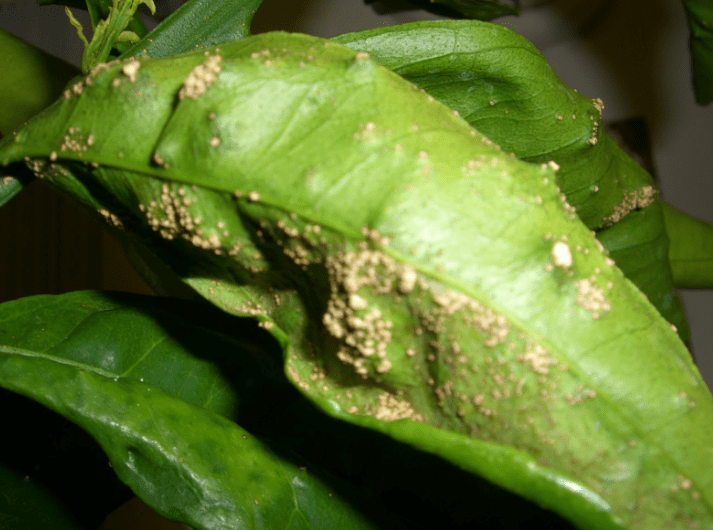
Soil and Drainage Problems
Importance of well-draining soil
When it comes to gardening, the importance of well-draining soil cannot be overstated. Proper drainage is essential for the health and productivity of your plants. Soil that does not drain well can lead to waterlogged conditions, which can suffocate the roots of your plants and promote the growth of harmful pathogens such as fungi and bacteria.
In addition to promoting disease and pest problems, poorly draining soil can also lead to nutrient deficiencies in your plants, as waterlogged conditions can prevent the uptake of essential nutrients. This can result in stunted growth, yellowing leaves, and poor overall health of your plants.
To ensure that your soil drains well, you can incorporate organic matter such as compost into your soil to improve its structure and drainage. Additionally, you can consider using raised beds or containers with well-draining potting mix for your plants.
By paying attention to the drainage of your soil and taking steps to improve it, you can create a healthy and thriving environment for your plants to grow and flourish. So, make sure to prioritize well-draining soil in your gardening efforts for the best results.
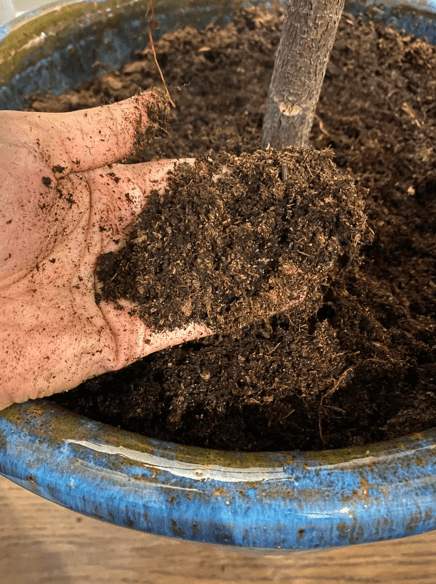
Symptoms of poor soil drainage
Include water pooling on the surface of the soil, slow or stagnant water infiltration, and the presence of water-loving weeds such as cattails or rushes. In addition, you may notice an unpleasant odor coming from the soil, indicating that it is waterlogged and lacking in oxygen. Plants may also show signs of stress, such as wilting, yellowing leaves, or root rot. If you notice any of these symptoms in your garden, it is important to address the issue of poor soil drainage in order to prevent further damage to your plants. Testing the soil’s drainage capabilities and taking steps to improve it, such as incorporating organic matter and creating raised beds, can help to create a healthier growing environment for your plants. By being attentive to the symptoms of poor soil drainage and taking proactive measures to address it, you can ensure the success of your garden and the health of your plants.
Improper Lighting Conditions
Ideal sunlight requirements for lemon trees
Lemon trees thrive in full sunlight, so it’s important to ensure they receive at least 6-8 hours of direct sunlight each day. Without adequate sunlight, lemon trees may not produce as much fruit or may become susceptible to diseases. If you’re growing lemon trees indoors, placing them near a sunny window or using grow lights can help provide the necessary light for healthy growth. It’s also important to monitor the tree for any signs of sunburn, such as yellow or brown spots on the leaves, and adjust its placement accordingly to ensure it receives the right amount of sunlight. By providing the ideal lighting conditions, you can help your lemon tree thrive and produce the best quality fruit.
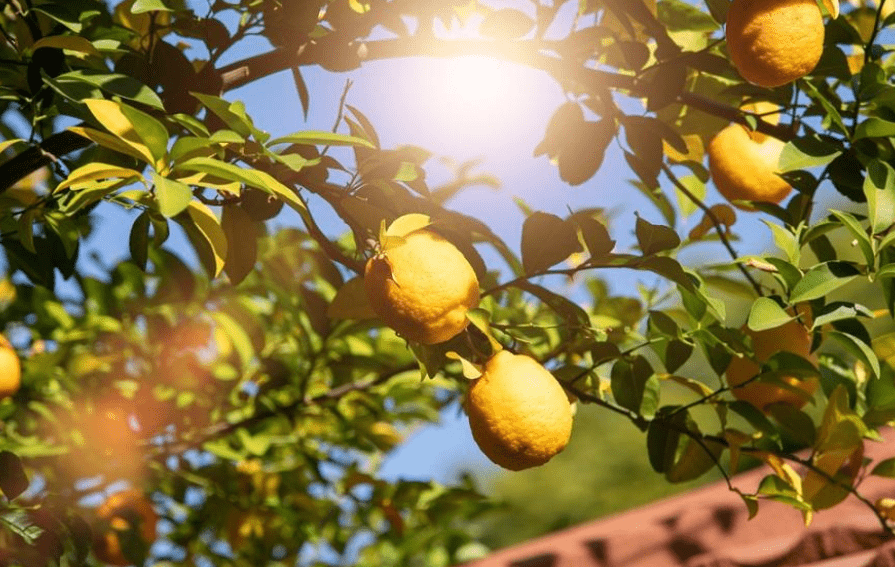
Effects of insufficient or excessive light
Insufficient or excessive light can have significant effects on plant growth and health. When plants do not receive enough light, they may become leggy, have pale leaves, and struggle to produce flowers or fruit. On the other hand, excessive light can lead to sunburn and damage to the plant’s leaves and overall health. It’s important to ensure that your plants receive the proper amount of light for their specific needs in order to promote healthy growth and development. Monitoring the light levels and providing the necessary adjustments, such as using grow lights or adjusting the placement of indoor plants, can help to create an optimal growing environment for your plants.
Tips for ensuring adequate light exposure
include placing your plants in a location where they can receive direct sunlight for at least 6-8 hours a day. If you are growing plants indoors, you can use grow lights to provide the necessary light exposure. It’s important to monitor the tree for any signs of sunburn, such as yellow or brown spots on the leaves, and adjust its placement accordingly to ensure it receives the right amount of sunlight. By providing the ideal lighting conditions, you can help your lemon tree thrive and produce the best quality fruit. Effects of insufficient or excessive light can have significant effects on plant growth and health. When plants do not receive enough light, they may become leggy, have pale leaves, and struggle to produce flowers or fruit. On the other hand, excessive light can lead to sunburn and damage to the plant’s leaves and overall health. It’s important to ensure that your plants receive the proper amount of light for their specific needs in order to promote healthy growth and development. Monitoring the light levels and providing the necessary adjustments, such as using grow lights or adjusting the placement of indoor plants, can help to create an optimal growing environment for your plants.
Seasonal Changes and Leaf Drop
As the seasons change, it’s important to monitor the health of your trees and plants. Leaf drop can occur as a natural response to changes in temperature and daylight hours. It’s important to be aware of the signs of stress in your plants, such as yellowing or dropping leaves, and adjust your care routine accordingly. Make sure your plants are getting the right amount of sunlight, water, and nutrients to support their health during seasonal changes. Keep an eye out for any signs of disease or pest infestation, and take proactive measures to protect your plants. With proper care and attention, you can help your plants thrive through seasonal changes and ensure their continued health and growth.
Solutions and Preventative Measures
Proper watering techniques
Are essential for the health and growth of your plants. Overwatering can lead to root rot and other issues, while underwatering can cause wilting and stress. It’s important to water your plants deeply and evenly, allowing the soil to dry out slightly between waterings. Using a watering can or a drip irrigation system can help ensure that your plants receive the right amount of water without drowning their roots. Consider the specific water needs of each plant and adjust your watering schedule accordingly. Additionally, using a moisture meter can help you accurately gauge the moisture levels in the soil and prevent over or under watering. By paying attention to the moisture needs of your plants, you can help them thrive and avoid common watering pitfalls.
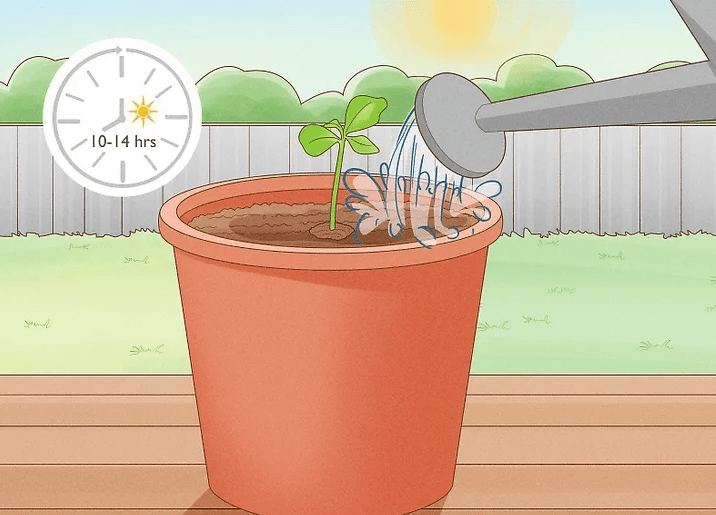
Fertilization best practices
Are important for the health and growth of your plants. It’s essential to use the right type of fertilizer for your specific plants and to follow the recommended application rates. Using too much fertilizer can damage the roots and burn the foliage, while using too little can result in nutrient deficiencies. It’s important to understand the nutrient needs of your plants and to choose a fertilizer that matches those needs. You can conduct a soil test to determine the pH and nutrient levels of your soil, which can help you determine the best type of fertilizer to use. Additionally, it’s important to fertilize at the right time, typically during the growing season, to support healthy growth. Using organic fertilizers can also help improve soil health and promote long-term growth. By following proper fertilization best practices, you can ensure that your plants receive the nutrients they need to thrive and maintain their health.
Pest and disease control strategies
Are essential for maintaining the health of your plants. One effective strategy is to practice good garden hygiene by removing any debris, weeds, or diseased plants from your garden. This helps to eliminate potential hiding spots for pests and reduces the risk of disease spread. It’s also important to monitor your plants regularly for any signs of pest infestation or disease. Early detection can help you take action quickly to prevent further damage.
Another strategy is to use natural predators or biological controls to manage pest populations. For example, introducing ladybugs can help control aphids, while releasing predatory nematodes can help manage soil-dwelling pests. Using insecticidal soaps or neem oil can also effectively control certain pests while being less harmful to beneficial insects and the environment.
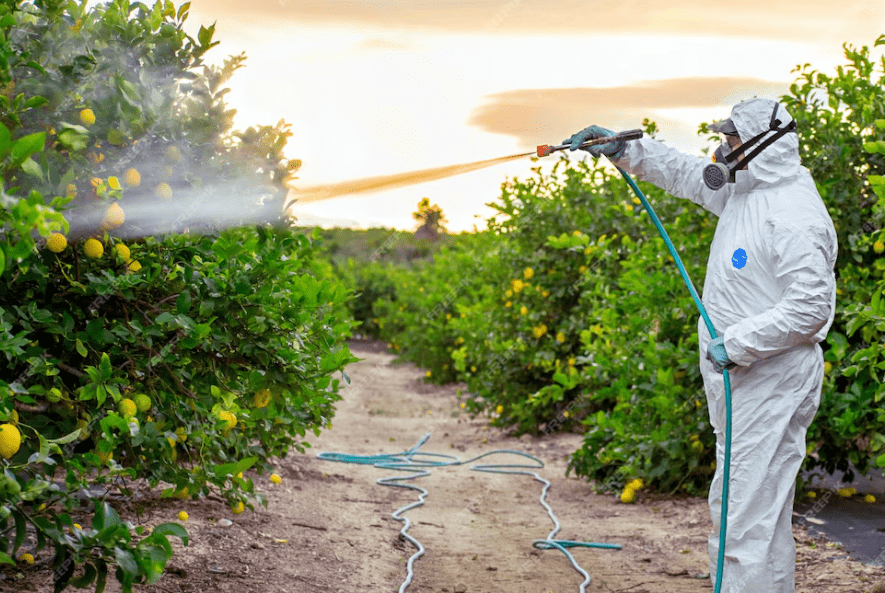
In addition, practicing crop rotation and intercropping can help reduce the risk of pest and disease infestations. This helps to disrupt the life cycle of pests and can prevent the build-up of pathogens in the soil.
Using resistant plant varieties and selecting disease-resistant cultivars can also help minimize the risk of disease outbreaks in your garden. It’s important to choose plants that are well-suited to your specific growing conditions and are less susceptible to common diseases in your area.
Finally, maintaining proper irrigation and watering practices can help reduce the stress on plants, making them less susceptible to pests and diseases. Ensuring proper air circulation and adequate spacing between plants can also help prevent the development and spread of diseases.
By implementing these pest and disease control strategies, you can help promote the health and vitality of your garden while reducing the need for chemical interventions.
How to Revive a Lemon Tree Losing Leaves
Immediate steps to take when leaf loss is noticed
If you notice your lemon tree losing leaves, there are immediate steps you can take to help revive it. First, make sure the tree is getting enough water and sunlight. Proper watering and sunlight are essential for the health of the lemon tree. Check the soil moisture regularly and adjust the watering schedule accordingly. Next, inspect the tree for any signs of pests or diseases. If you notice any issues, take steps to address them promptly. Additionally, consider providing the tree with a balanced fertilizer to support its growth and health. It’s also important to prune any dead or damaged branches to promote new growth. By taking these immediate steps, you can help revive your lemon tree and encourage it to thrive in the future.
Long-term care strategies to promote recovery
are essential to ensure the continued health and growth of a lemon tree. After addressing any immediate issues, it’s important to continue providing the tree with proper care and attention. This includes maintaining a regular watering schedule, ensuring the tree receives adequate sunlight, and monitoring soil moisture levels. Additionally, continue to inspect the tree for pests and diseases, and take proactive measures to prevent or address any issues that arise. Regular fertilization with a balanced fertilizer can help support the tree’s ongoing growth and health. Pruning dead or damaged branches as needed will also promote new growth and overall tree health. By consistently implementing these long-term care strategies, you can help your lemon tree recover and thrive for years to come.
Monitoring progress and making adjustments
Are essential steps in ensuring the success of any long-term care strategy for a lemon tree. Regularly checking on the tree’s growth, health, and overall condition will allow you to make any necessary changes to your care routine. This could include adjusting the watering schedule based on the season, increasing or decreasing sunlight exposure, or addressing any new pest or disease issues that may arise. By staying vigilant and making proactive adjustments, you can ensure that your lemon tree continues to thrive and produce healthy fruit. Additionally, keeping detailed records of your care routine and the tree’s progress can help you identify trends and make informed decisions about future care strategies. Remember, consistent monitoring and adjustment are key to promoting the long-term recovery and health of your lemon tree.
In conclusion, it’s important to regularly inspect your lemon tree for any signs of pests, disease, or environmental stress. By addressing these issues promptly and providing proper care, you can help your lemon tree regain its health and vitality. Additionally, regular pruning and fertilizing can also contribute to the overall well-being of your lemon tree. With the right knowledge and proactive care, you can ensure that your lemon tree continues to thrive and produce delicious fruit for years to come.
Frequently asked questions And Answer
There are several common causes for lemon trees losing their leaves, including overwatering, underwatering, nutrient deficiencies, pests, and diseases.
Overwatering can cause yellowing leaves and root rot, while underwatering can cause wilting and dry, brown leaves.
Nutrient deficiencies such as nitrogen, potassium, and magnesium can cause leaf yellowing and loss.
Regularly inspect your tree for signs of pests and diseases, and consider using organic pest control methods or fungicides if necessary.
Adjusting your watering schedule, providing proper nutrients through fertilization, and addressing any pest or disease issues are effective solutions for preventing and addressing leaf loss in lemon trees.
Yes, extreme temperatures, wind, and inadequate sunlight can also contribute to leaf loss in lemon trees.
If you have tried addressing common causes of leaf loss and your lemon tree continues to decline, it may be necessary to seek professional help from a certified arborist or horticulturist.
